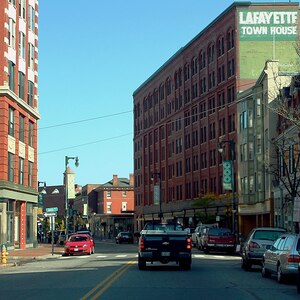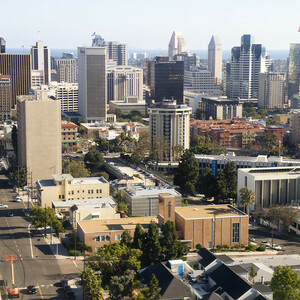
Navigating the intricacies of state-mandated building energy codes and alternative compliance paths is tricky business. This seems to be the modus operandi of the United States, a nation of common laws and varying standards, owing to the political winds in each state. Call it a contradiction in terms.
Case in point, states like Colorado, Missouri, and South Dakota, among others, currently have no statewide residential energy code in place. But don’t let that fool you. Colorado’s Building Performance Program, which took effect in October 2023, lays out ambitious benchmarking and sector-wide emissions reductions goals for building owners. And the City of St. Louis has its own Building Energy Performance Standard (BEPS), adopted in 2020, which mandates strenuous energy consumption reductions across all building types ≥ 50,000 square feet. Other states have simple baseline codes—based on some iteration of the International Energy Conservation Code (IECC) for residential buildings or ASHRAE 90.1 for commercial—and don’t allow jurisdictions to adopt more aggressive codes. Meanwhile, a few states (e.g., New York and Massachusetts) have enacted stretch and/or specialized stretch codes that go well beyond their respective baseline state or local codes. Heck, if you include California’s Green Buildings Standards Code (aka CALGreen) in this group (we should), we may soon be able to count these examples using more than one hand.
A stretch in the land of Lincoln
Illinois is about to become the latest state with its own opt-in stretch code. Culminating at the end of 2023, following more than two years of development and negotiation, the state’s new Stretch Energy Code is set to be made available for adoption by municipalities on June 30 of this year. For residential buildings (all types and sizes), the code lays out tiered benchmarks for energy efficiency levels based on a site energy index relative to the 2006 IECC. For instance, by the end of 2025, sector-specific buildings within municipalities that adopt the stretch code must achieve a site energy index no greater than 40% of the 2006 IECC, with gradual reductions made through the end of 2031.
Of course, because the oblong state spans two IECC-designated climate zones (5 in the northern half, 4 in the south), achieving efficiency rates relative to certain R-value minimums for building components (e.g., mass walls and floors) specified in the 2006 code won’t be the same for, say, a Rockford versus a Carbondale. Further, overall efficiency requirements within the 2006 IECC (which is roughly equal to base code) are far lower than its 2021 iteration. That’s not a demerit, it’s just a measuring stick. After all, the 2023 and subsequent residential EUI targets laid out in the stretch code represent significant reductions relative to Illinois’ own 2018 IECC Equivalent or the slightly superior 2021 IECC.
“The stretch code doesn’t mean anything if municipalities aren’t prepared to adopt it. A lot of thinking went into how we make sure that municipalities are in a position to feel comfortable adopting it, and that there are resources available to them,” says Brian Imus, executive director of Illinois Green Alliance, a non-profit advocacy group with a membership base composed of sustainability-minded architects, engineers, contractors, and developers. One needed resource for on-ramping cities is education and training, and the Illinois Green Alliance has set up the Building Energy Resource Hub for that very purpose.
Accessing a wealth of resources
Another consideration is money. Even for those small- and mid-tier cities outside of Chicagoland that want to do their part, the requisite measures can seem disruptive and cost-prohibitive. The Building Energy Resource Hub provides information on financing options, too. But Imus is focused on the bigger picture. “One thing that’s driving a lot of interest even among non-green builders is that everyone is starting to recognize that financing opportunities for decarbonization projects are drastically changing,” he says. “While the Hub is helping building professionals, it should make municipalities feel more comfortable because they know those professionals have the resources and education to make compliance with the stretch code much easier.”
The resources are myriad, and like codes themselves, difficult to parse through. Fortunately, Illinois has a very favorable landscape for renewable energy and high-efficiency retrofits. According to Scott Farbman, an architect and passive house consultant who is a member of the Illinois Energy Conservation Advisory Council and sat on stretch code development team’s residential sub-committee, “Too few states have their own built-in rebate programs, and even those that do won’t allow you to stack with federal” credits and other incentives. Illinois, on the other hand, allows customers to access a 38% state rebate for installing solar arrays and battery storage on top on the federal 30% tax credit, along with the option to earn one solar renewable energy certificate (valued at $1) for each megawatt hour produced by the PV system over 15 years.
Farbman isn’t immune to concerns over the seemingly draconian nature of such codes. All the same, he doesn’t hide his optimism. “There’s a balance,” he says. The stretch code makes it easy “to meet prescriptive compliance [pathways] while giving developers, owners, and designers plenty of reasonable options to get there. You can focus just on building systems and do solar, heat pumps, and other measures. You can focus on envelopes and air leakage issues and improve R-values. Or you can focus on a combination of these things … the intent isn’t to shove packages down people’s throats, but to give options that are best for each project. The [code] will be used in that way.”
A legislative agenda years in the making
This pathway to decarbonizing the state’s building sector began with the Climate and Equitable Jobs Act (CEJA), an ambitious piece of legislation, passed in 2021, that, among other things, explicitly required the state to develop a stretch energy code “for adoption by any municipality and shall set minimum energy efficiency requirements, taking the place of the Illinois Energy Conservation Code within any municipality that adopts [the stretch code].” “CEJA’s purpose is to decarbonize the state,” Farbman adds.
Even with the lag time between Governor Pritzker signing CEJA into law and the finalizing of the stretch code, the state’s legislature voted last May to extend its adoption period by six months in response to concerns about how the stretch code might hold up against the upcoming 2024 IECC. Turns out this was a smart move. RMI and the New Buildings Institute both provided technical assistance as the stretch code was coming together. In that capacity, they facilitated discussions with council members on how to meet CEJA’s requirements across all sectors. “One consideration was, do available model codes meet the requirements of CEJA?” says Erin Sherman, a senior associate at RMI, focused on carbon-free buildings. “And based on the current draft of the 2024 IECC, it appears yes, it meets the energy index requirement of the commercial stretch code. It doesn’t for residential.” So, to meet CEJA’s efficiency threshold, Sherman and her colleagues pointed to the 2024 IECC’s prescriptive pathway (not included in the 2021 code), something she describes as “super flexible and allows builders to select from a credit table to choose which measures they will use” for compliance.
That just leaves the question of which municipalities in the state will lead the way. “I think Evanston and Oak Park are going to be early adopters,” Farbman says. “They’re the [communities] leading the charge with gas bans, so I suspect they’ll go first.” But beyond the moneyed suburbs of Chicagoland, it’s anyone’s guess.
At the moment, Illinois has not enacted any incentives program focused specifically on stretch code adoption. The federal policy landscape is very favorable to stretch codes, Sherman says, “and the reason for that is federal policy is strongly supportive right now of making 2021 IECC base code, and many federal incentives for new construction scaffold from the 2021 IECC in a way that is suggestive of an incentivized stretch code.”
According to Illinois Green Alliance’s Brian Imus, “the carrots and sticks are aligning.”
________________________________________________________________________
Justin R. Wolf is a Maine-based writer who covers green building trends and energy policy.
Weekly Newsletter
Get building science and energy efficiency advice, plus special offers, in your inbox.















0 Comments
Log in or create an account to post a comment.
Sign up Log in